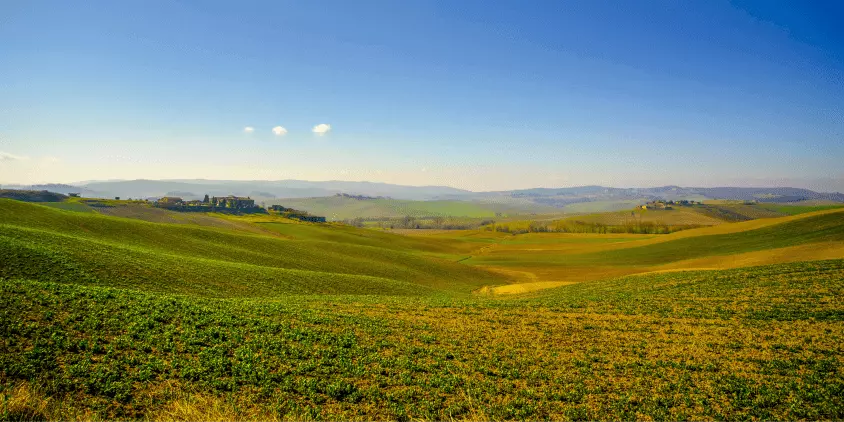
Slope Erosion: Underlying Factors And Control Methods
Valuable topsoil on hills is constantly being lost to water and wind erosion. If nothing is done about it, this slow but steady process of slope erosion can lead to barren and unstable lands. Therefore, hillside erosion control is crucial for farmers who rely on their fields for abundant harvests year after year.
Even though protecting sloping lands has been an issue for farmers at all times, new methods and tools are appearing to help. Well-informed management aimed at preventing erosion on slopes allows farmers and landowners to better protect their properties from this serious threat.
What Is Slope Erosion?
The term “slope erosion” describes the process by which water and wind wear away the top layer of soil along a hillside. The topsoil can be blown or washed downhill, accumulating at the hill’s base, or polluting surrounding bodies of water as sediments. Erosion on the slope reduces soil fertility, which, without control measures, eventually renders the land wholly unfit for plant growth.
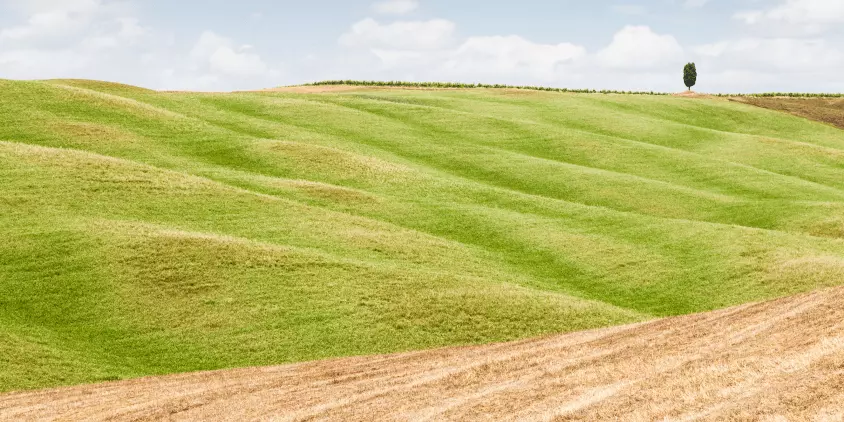
Causes Of Slope Erosion
Water, particularly in the form of heavy rain, is the primary cause of erosion on the slopes. When rain falls on the ground, it loosens particles of soil, which are subsequently washed down the hill. Wind can also easily erode bare or poorly vegetated hillsides.
The degree of hillside erosion mostly depends on the following factors:
- Rainfall intensity and frequency. The greater the rainfall, the more forceful the water flow.
- Hills steepness. The steeper the hill, the more forcefully and rapidly the water will run down it.
- Vegetation cover. Bare soil is easily blown away by the wind and prone to more intense water flow downhill.
- Type of soil. Clay soils are more resistant to degradation than sandy soils.
Relation Between Slope Gradient And Erosion
Hillside erosion might become severe when the slope gradient is greater than 35%. You can measure the gradients with the help of topographic maps or in the field with a clinometer. Based on their grade, hillsides can be roughly broken down into three categories:
- Up to 33%: slopes with a low to moderate grade, which need mulching and ground cover for protection from hill erosion.
- 33 to 50%: slopes with a moderate to steep grade, requiring the use of deep-rooted vegetation and drip irrigation.
- Over 50%: slopes with a steep grade, which might necessitate the construction of terraces and retaining walls to prevent the rain from washing soil away from a hillside.

How To Stop And Prevent Erosion On The Slopes
There are several forms of erosion on slopes, and each requires a distinct strategy to control. The sheet erosive process, which takes place when small jets of meltwater or rainwater wash away soil layer by layer across the hills’s surface, is less obvious but just as dangerous as the more dramatic gully erosion that occurs when heavy rainfall causes channels to form. Steep hills without shelter from plants are especially vulnerable to degradation. Depending on the local terrain, climate, and practical goals, approaches for how to stop erosion on a hill will differ.
Cover Crops
Cover crops are what you need to plant on a hill to stop erosion, as they protect the ground from rain’s and wind’s eroding effects. Even if the above-ground plant parts are frozen during the cooler season, their roots can still help retain and reinforce the soil on a slope . Complete ground coverage by plants, including groundcovers, perennial grasses, and low shrubs, is the ideal defense against erosive effects.
Strip Cropping
Slope erosion poses a greater threat to areas with shallow-rooted or row crops. You can shield these areas through strip cropping, where row crops are planted between strips of more closely planted crops, like grass, small grains, or legumes.
Mulching
Mulch can be used alone or as part of an erosion-control blanket (mulch sandwiched between two nets) to prevent runoff, conserve water, and keep soil in place on hills. Mulch composed of bark, wood chippings, pine needles, or gravel is ideal as erosion control for hardly steep slopes. Components on hand, like leaf compost, shredded branches, or straw, can also become hillside mulch. Erosion-control blankets are preferable on steeper lands as a solution for how to keep mulch on a slope from washing away.
Preventing Soil Compaction
Intensive use of heavy machinery and farm equipment can cause soil compaction. When it rains, the water barely percolates through the dense earth layers, carrying with it the soil particles from above. The ground becomes even more compact and less fertile as a result.
Modern low-till techniques should be used to prevent soil compaction and the accompanying slope erosion. Farmers can enhance soil structure and aeration by enticing earthworms with the addition of compost or manure. Planting green manure crops, such as legumes and perennial grasses, whose roots break up the soil into smaller pieces, can also help recover compacted earth.
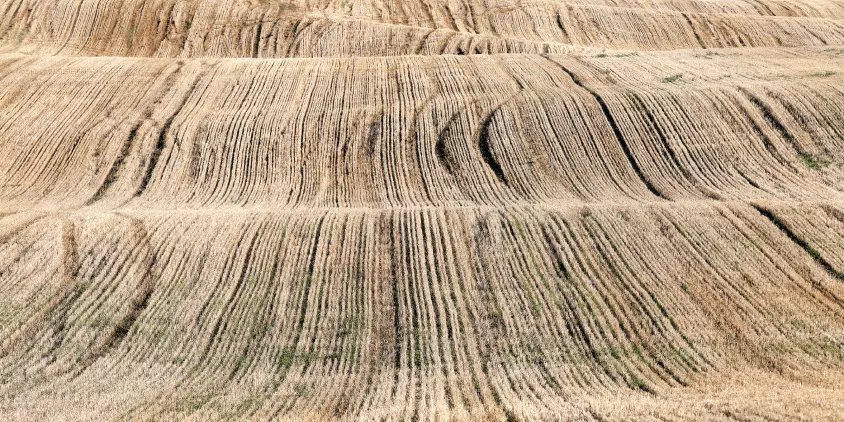
Reduced Tillage
Deep tillage is at the forefront of the degradation and desertification processes that plague farmed hillside lands. Rooting depth and the soil’s capacity to store water in the upper portions are greatly reduced when topsoil is displaced downslope through tillage and deposits in the lower concave portions. Recognizing this pressing concern, researchers have begun to explore tillage practices that can conserve soil health and stop erosion on the hills. Mini-till, strip-till, and no-till farming have demonstrated promising results in preventing hillside degradation .
Terraces
Adding terraces to a slope to prevent erosion is a reliable control technique against destructive water effects. Terraces are man-made ridges and channels that are laid out across a hillside. Terrace farming helps slow down water running downhill and prevents it from pooling on hillsides, two of the major causes of soil depletion.
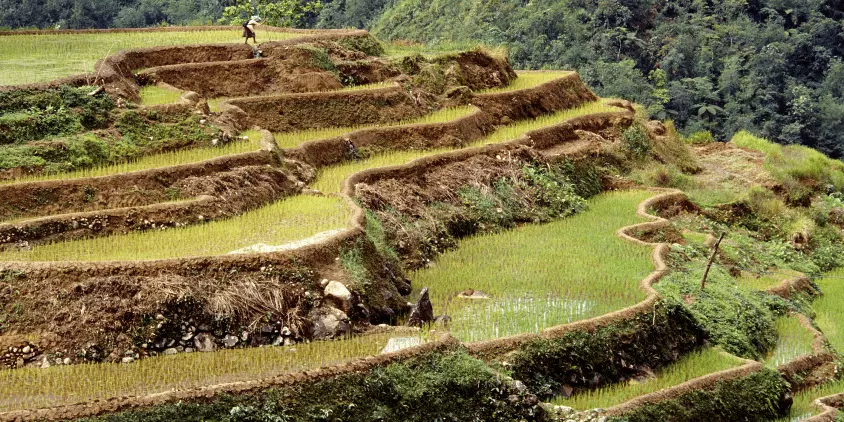
Drainage
One of the most effective ways to prevent soil degradation is to build structures that retain and infiltrate water. Contour ditches are among the time-tested steep slope drainage solutions, especially for small-scale hillside farms, because they are easier to construct than terraces and help redirect and store water with minimal effort. When it rains, water will flow down the hill and fill the channel, where it can remain for a few days, accessible to the roots of the plants. Using preexisting waterways for drainage is another option, but doing so may exacerbate slope erosion by directing water into already gully-prone areas.
Flumes
Slope degradation brought on by heavy rain discharges onto the ground can be mitigated through the use of flumes. Construction of a paved flume above the ground will allow you to keep dirt from washing away on the hill since the water, channeled right from the hill’s top to its toe, doesn’t contact the soil.
Drip Irrigation
Irrigating sloping lands is challenging since water naturally flows downhill, resulting in waste and runoff. The best irrigation for preventing slope erosion is drip irrigation, which brings water right to the plant root zone. The low pace of drip irrigation increases the likelihood that water will seep into the ground right at the place of application.
Retaining Walls
If no action is taken to stabilize a steep, highly degraded slope, it will keep collapsing. To prevent the hill from caving in, construct a retaining wall at its base. This erosion control structure for steep slopes not only keeps back the earth but also allows grass and other plant life to establish themselves and protectively cover the ground. Retaining walls provide other benefits, such as improved drainage and reduced sediment pollution.
EOSDA Crop Monitoring
Fields analytics based on high-resolution satellite images to track all the changes on-the-spot!
Slope Erosion Control With Innovative EOSDA’s Solutions
Hillside farming rests on careful planning and the use of appropriate slope erosion control methods and technologies. To begin, it is vital to choose crop varieties well suited to the hilly-land climate and soil. Since uncontrolled water flows are the primary driver of slope erosion, monitoring and managing these flows is key. We can help by providing tools for keeping tabs on a range of water-related indicators. For instance, water erosion modeling is now offered as a custom solution and is on the roadmap as a ready-made solution.
Slope Map For Spotting Problem Areas
Farmers using crop tracking to get insight into the density and health of their hillside crops by comparing the Slope map with the NDVI index map in the Split view mode. Through regular monitoring, farmers can pinpoint low-vegetation areas and take targeted measures to stop erosion on a slope. These measures include subsowing cover crops between row crops like corn, sunflowers, beets, and potatoes; rotating crops; incorporating perennial grasses; and switching from rainfed agriculture to reduced tillage.
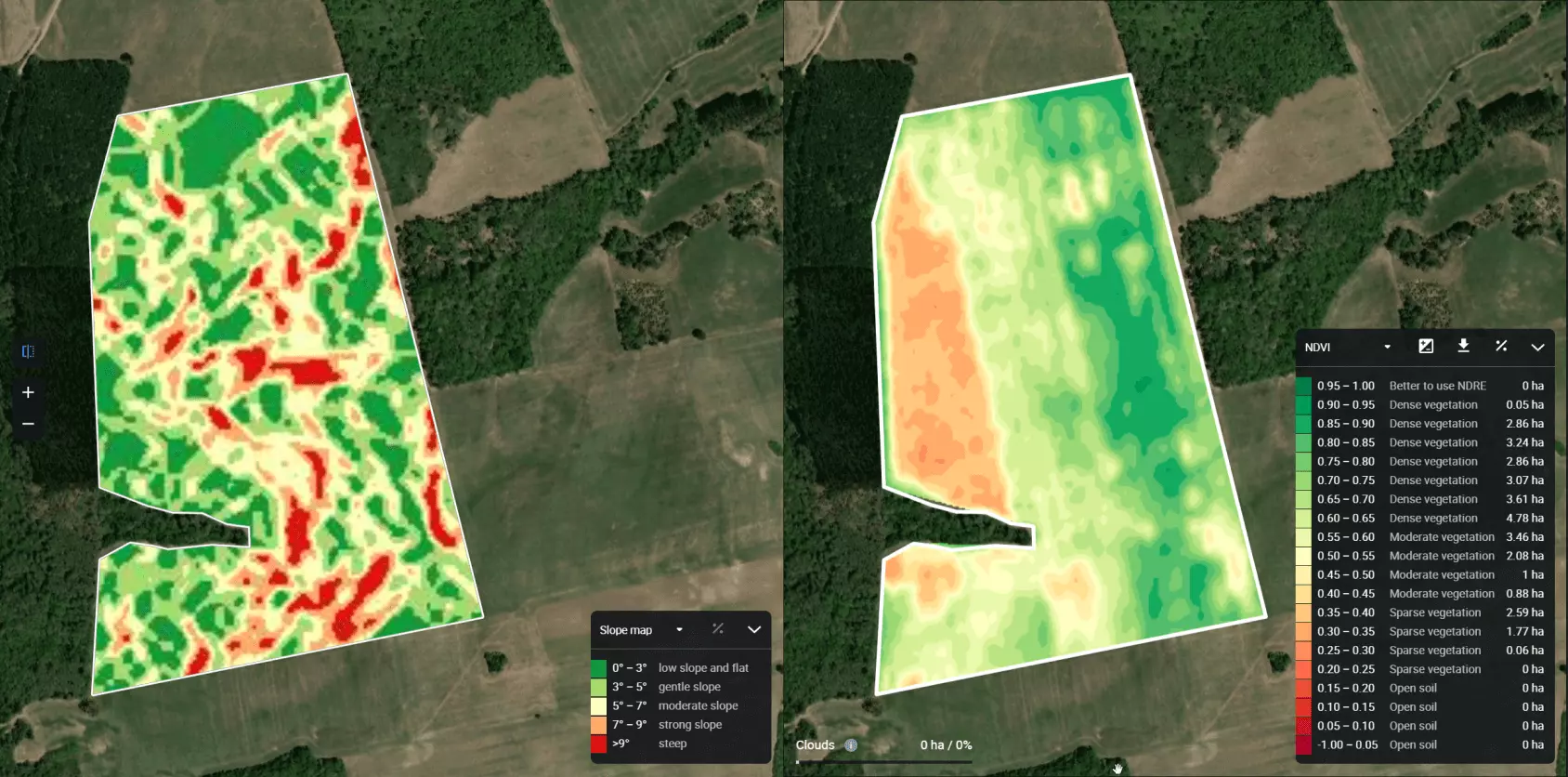
Multilayer Map For Variable-Rate Input Application
Due to slope erosion, hillside terrains are highly prone to humus and nutrient loss, as well as shifts in the chemical composition of the soil, all of which reduce field productivity. Besides, the topography variance of a field influences the amount of seed, fertilizer, and pesticide required to ensure healthy plant development. Combining the vegetation and elevation layers in a Multilayer map produces the best visualization for variable-rate application (VRA) of inputs, allowing for optimized resource allocation and field productivity.
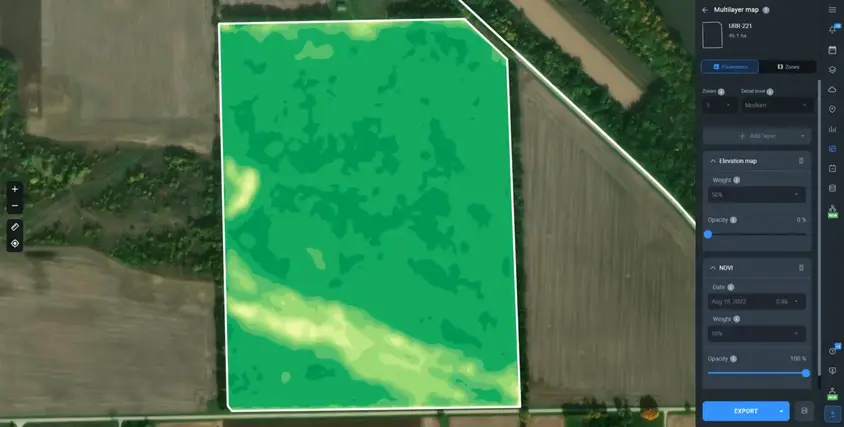
Precipitation And Soil Moisture Data For Erosion Control Planning
Designing an efficient system of steep slope erosion control measures relies heavily on the modeling of long-term agricultural GIS data. Since adequate soil moisture, either through natural precipitation or artificial irrigation, is a fundamental aspect of stopping erosion on a hill, the analysis of precipitation patterns and the assessment of soil moisture levels form the bedrock of anti-erosion planning.

Slope erosion does not have to be an inevitable reality. Soil conservation efforts can keep hillside farmland stable and productive for the long haul. Through the harmonious integration of age-old agricultural practices and cutting-edge technology, farmers can cultivate resilience in the face of erosion.
About the author:
Vasyl Cherlinka is a Doctor of Biosciences specializing in pedology (soil science), with 30 years of experience in the field. He attended the engineering college in Ukraine and received his degree in agrochemistry, agronomy and soil science in the Chernivtsi National University. Since 2018, Dr. Cherlinka has been advising EOSDA on problems in soil science, agronomy, and agrochemistry.
Recent articles

Analyze 2025 & Plan Your Best Year Yet: LandViewer Christmas Offer
It’s the most wonderful time of the year! The Christmas holidays are here, and so is your chance to analyze 2025 and plan a prosperous 2026 with more affordable Pro plans in LandViewer.

EOSDA Models Climate Change Impact On Sugarcane Yields
EOSDA modeled future temperature, rainfall, and other climate impacts on Veracruz sugarcane. The results help growers plan long-term adaptation strategies, including timing, varieties, and irrigation.

EOSDA LandViewer Black Friday Sale: Exclusive Offers & Giveaway
This Black Friday, LandViewer offers new users the chance to save on monthly plans, get extra months with yearly subscriptions, and participate in a free annual plan giveaway.